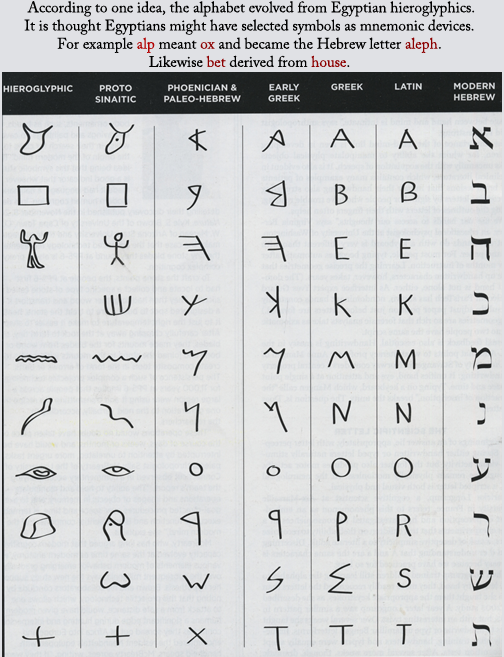Welcome to the HoB's Children's Literature Historical
Contents
Development of children's literature
When thinking about the origins of children's literature a few questions come to mind:
- Should only a specific media be considered?
- Should materials to teach children reading, writing, and grammar be excluded?
- Should it be when the first book, not written to teach language, Les Contenances de la Table, is published?
- When inexpensive forms of literature become available and popular for many, Chapbooks?
- When the world's first children's picture book, Orbis Sensualium Pictus is published?
- Or when A Little Pretty Pocket Book, by John Newberry is specifically written to entertain and instruct children?
- Or should it include a whole new way of thinking about children and their education to become part of a culture, like: John Locke and Jean Jacques Rousseau who describe ways of educating children.
- Or should we look explore the history of media, communication, literature, and literacy for the early glimmers of children’s literature?
The children's literature timeline includes events and media to consider for such explorations. Information which can be considered related prerequisites necessary for children’s literature to germinate and information that is children's literature.
The next few paragraphs below consider a brief history of the development of communication, media, literature, and literacy, from which children's literature is embedded. Consider how these have combined to create what is and isn't considered children's literature yesterday, today, and tomorrow.
Communication, media, literature, & literacy
First, consider the origins of communication, by wandering back in history to a time before humans. And consider what might be the first kind of communication. Which, could be free flowing molecules, proteins, and viruses interacted and made more complex substances (molecules, proteins, and viruses) in predicable patterns, a communicative event.
Later this free flow of matter and information creates cells and organisms with membranes. Borders, which block entry of foreign matter and energy. Thus, needing structures to selectively allow beneficial matter or energy in and out. With respect to communication, structures that sense information, eyes, nose, ears, skin, and tongues; and structures to transmit it. Structures that need a process to decide how to respond and the structures to respond. Putting the processes necessary to communicate in place. A means for a message to be received from an external source and structures to respond to what is sensed. Responses, which can be involuntary responses or voluntary responses, which implies choice in acting and suggests conscious reactions, which eventually suggests a brain.
From this point in time, everything essential for organisms to communicate with gestures, chirps, songs, dances, pheromones, food, speech, song, chants ... are in place. A message can be created (authored), transferred thorough an external medium (space), with a media (movements and vocal actions), to a receiver (listener, viewer, audience) who may respond to the message. If so,develop communication has occured.
Therefore, if communication with children is the beginning of children's literature, then it could be claimed to have started before we were even human. Probably with had signals. Consider, A field study in 2018 found chimpanzees, bonobos, gorillas, and orangutans used 33 different gestures to communicate with many of these animals using the same gesture in the same manner. What they communicate is orders: Give me that. Come closer. Groom my fur. Stop that… Humans use many more gestures and sign language that goes beyond orders to include social contexts, emotions, and attitudes. Thumbs up, fist bump, okay signal, and hands to a heart.. Source
Next let's conside literature as communication stored so the same messages can be communicated repeatedly. Like duplication of instructions with RNA or DNA; in a brain, which can memorize information and teach it to others; or develop tools to create lasting artifacts (media) to share with others. Messages were recorded (authored) on a media (rock, hide, clay tablet, skin, scroll, cloth, paper, ..) and transported through time to another (listener or viewer).
A person could gesture danger, the location of water, where to find food, paint a scene on the wall of a cave, etch markings or pictures on shells and bone, and smear okra on their body. Eventually, these ideas and materials came together to record a story, which may be considered the first work of literature. Maybe to retell events of the day, memories of past stories, and why stories around a campfire. All of these were probably done many times in many places with many types of media. All lost through the passing of time, but many of which could be considered literature.
Then, with the development of quality literture, there is a desire to preserve it, to be able to communicate it to the younger members of a community. To pass on what is considered important for their culture, survival, and desire to prosper. And to do so requires some of the young to learn it well enough to pass it on and so forth; and to do so requires a need for literacy (including reading, writing, listening, speaking, visual literacy, & multiple literacies).
Eventually as they continue this process they will realize children have different needs than adults and to help children learn and become inculturated to benefit their civilization, they create a different kind of media and learnings for children. Hence, children's literature.
The children's literature timeline includes examples for these ideas and more for you to make your own conclusions.
Enjoy!
Children' literature research suggestions & ideas.
Literacy, literature, media, language arts, & children's literature - home page
Focus questions & ideas for
Historical research into trends or ideas in Children's literature
Suggested topics, focus questions, or ideas to generate ideas to explore and investigate. The list is by no means comprehensive. It is provided to focus your thoughts on different ideas related to literature so you might select a topic that you are enthusiastic to explore and investigation.
Change in morals or themes in children's books - is there information to support the idea that early children's literature had lessons, morals, religious ideas, and later changed to enjoyment and teaching subject information? If so, why would it? Is there evidence to support a changing or continuing trend?
Use of Rhyme - Has rhyme always been used in children's books. When and how was it first used? What was the purpose of using rhyme in children's literature and what are the reasons for it's continued uses? What evidence is there for your ideas?
Alphabet books - When were alphabet books first written? How were they used and how has their use changed? Is there a connection of alphabet books and rhyme? What might the purpose be for it? What evidence is there for your ideas?
Development of fantasy in children's books - How has the types of children's stories changed with culture's conditions. For example: did the type of children's literature change from before, during, and after a World War? Before, during or after the Great Depression? or other cultural or social events. If so, what is it why do think it changed, and what evidence is there for the change?
Use of illustrations or pictures in children's books. When were pictures first used? What was and is the purpose of their inclusion? What evidence is there for your ideas?
Importance of children's literature for children and/or society - What may have influenced the historical changes in stories that children enjoy? How much of the change has been planned or deliberate? Is the change more controlled by adults or children or some other force?
Brief examples of some historical changes across the ages: Children in ancient Rome mainly listened to oral adult stories, in the middle ages, there were very little stories for children, but children enjoyed some adult literature.
During the European Renaissance instructional books were written for adults to increase their literacy.
In the 17th century John Locke introduced the idea of children's minds as being blank slates "tabula rasa".
In the 18th century 1744 John Newberry published the first printed book for children The Pretty Pocket Book.
Today there is much diversity in children's books and that has expanded world wide.
Materials, technology, methods used to create children's books - How has different technologies changed the interactions that children can have with stories? Has the quality of those interactions stayed the same, increased, or decreased?
Brief summary: Oral telling of stories, songs and dance, pictures on the wall, hand made stamps, Greek and Roman plays, scribes drew pictures and write books.
Guetenberg printing press introduced mass production and cheaper, engravings, film, photos in 1947, audio, computer imaging, pop-up books, overlays and videos, digital, multimedia, interactive computerized... stories...
The relationship of society to the kinds of children's stories children enjoy
From etchings to what? - etchings on shells, cave drawings, carvings, paper and ink books and wood tablets, printing press, engravings, photography, technology for color production, animation...
Change of children's literature from adult oriented to child oriented ...
How has the style of writing changed? Here are the first pages of thirteen quality fiction books from 1812-1993? Any patterns? What if added later ones for the next thrity years?
Resources:
- Remember to explore the Children's literature timeline - for media and ideas to support your research for the development of media and children's literature.
- Sara Graça da Silva & Jamshid Tehrani created an evolutionary tree that traces the origins of popular fairy tales. Source. Comparative phylogenetic analyses uncover the ancient roots of Indo-European folktales. By Sara Graça da Silva & Jamshid J. Tehrani; The Royal Society; January 20, 2016.
First story ever written? (2100 BCE)
Read a tale from the Epic of Gilgamesh and the Humbaba
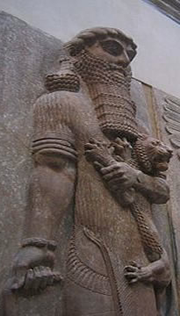
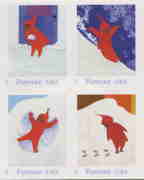
Top 5 checked out books at the New York Public Library
in 150 years (1870-2020)
- The Snowy Day by Ezra Jack Keats
- The Cat in the Hat by Dr. Seuss
- 1984 by George Orwell
- Where the Wild Things Are by Maurice Sendak
- To Kill a Mockinigbird by Harper Lee
English Bayeux Tapestry - (1066)
A story in textile about the Invasion of England or the Battle of Hastings (1066) told in thread - Sites for the Bayeux Tapestry
Chaucer's Canterbury Tales - (1380 + or - some )
The Butterfly's Ball and the Grasshopper's Feast by William Roscoe - (1807)
McGuffey Readers - (1834)
Excerpt from possibly the first comic book published in 1842 in the United States
as: The Adventures of Obadiah Oldbuck, by Rodolphe Töpffer
Rodolphe Töpffer created an illustrated book with characteristics of a comic book: pacing, storytelling, humor and whimsically exaggerated characterts. He personally sold his first book, Vieux-Bois, to bookshops across Europe.
The demand was good after the book was published and illicit copies were made by other people early in 1838. Töpffer redrew and refined his book and sold it in direct competition. However, Wilson and Company used the bogus copy to create the version that came to America with the name of The Adventures of Obadiah Oldbuck. This version had a better artistic style and maintained the origitnal layout and pacing. Thus becoming the first comic book available in America.
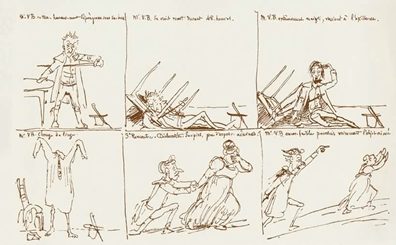
One of his best known cartoons, in the scientific community, is his spoof on the idea of phrenology having a scientific basis.
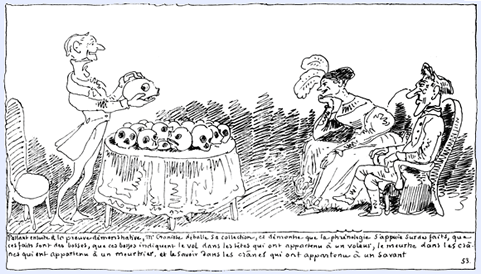
Caption reads -
Moving on to the demonstrative proof, Mr. Craniose unpacks his collection, and shows that phrenology is based on facts, that these facts are bumps, that these bumps indicate thievery in a head belonging to a thief, murder in a head belonging to a murderer, and knowledge in a head belonging to a scientist.
Early Writings
Early writing in America. Dated to around 900 BCE
(
800-1000 BCE)
Thought to be a poem as the images repeat in a pattern similar to the pattern of Mesoamerican poetic couplets. Scientific American July 2015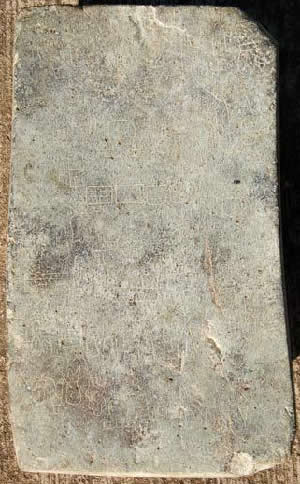
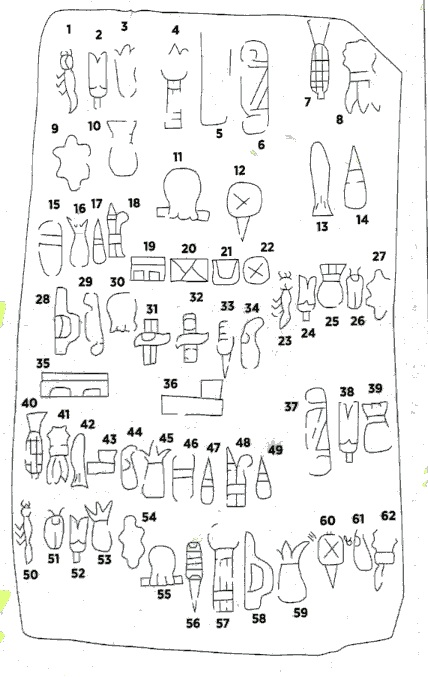
Early writing in America 850 BCE
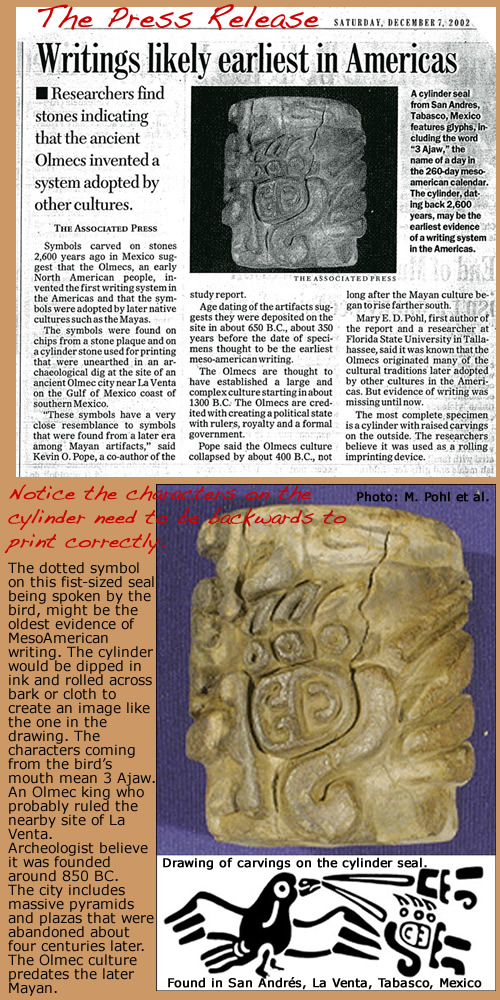
Evolution of the alphabet
